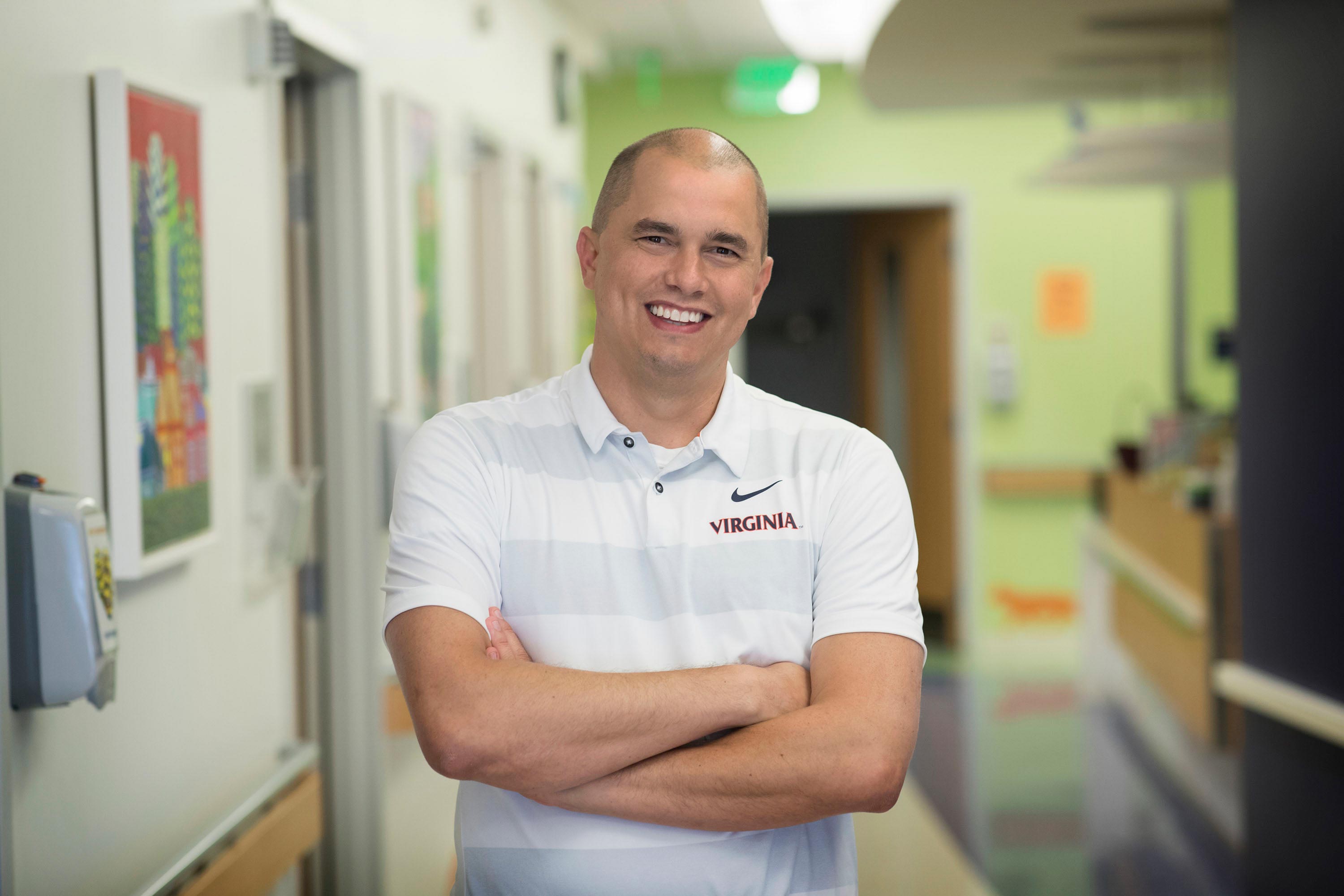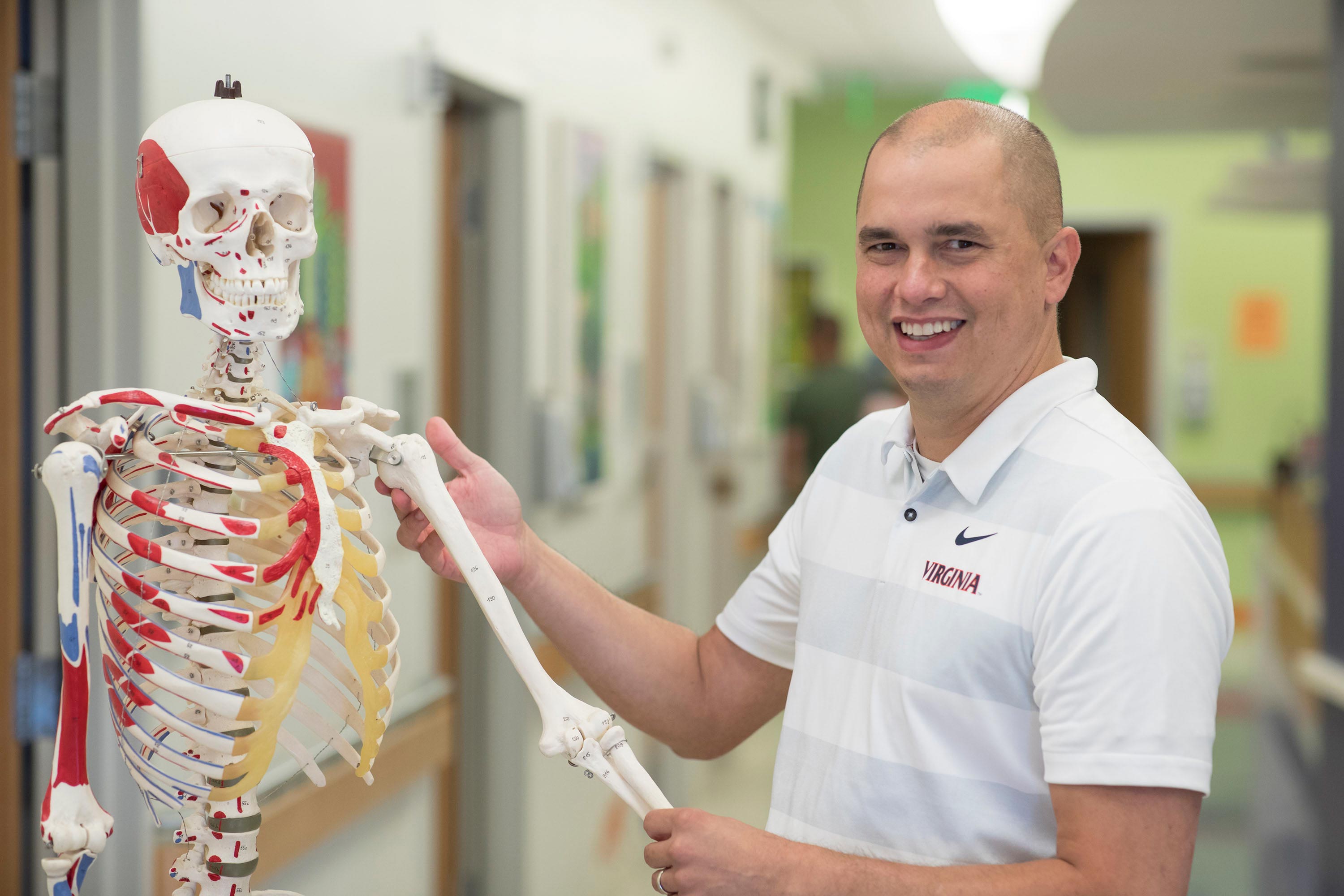There was a time not long ago when young athletes who were looking to recharge their batteries and gear up for their next season took their training a little easier in the summer.
But these days, playing a sport has become a year-round endeavor for many youths, who feel pressure to focus exclusively on one sport in their efforts to play at the high school and collegiate levels.
While there is credence to the saying, “Practice makes perfect,” too much practice can sometimes lead to overuse injuries, according to Dr. Winston Gwathmey, an orthopedic surgeon in the University of Virginia’s sports medicine division.

Dr. Winston Gwathmey says sports with repetitive movements put athletes at risk for overuse injuries.
UVA Today recently caught up with Gwathmey to talk about what he’s seeing in the clinics.
Q. Do you see a lot of kids with sports overuse injuries?
A. Yes. You see different populations, some with higher frequencies than others. With kids who specialize in single sports, you may see repetitive micro-trauma from performing the same activity over and over again. That’s basically overuse. It’s not an acute injury; it’s an injury that accumulates over time. I see it a lot, especially in the spring and the summer, when the kids are getting outside and playing more of their sports.
Q. What are factors that lead to overuse?
A. What often ends up happening is that the kids who excel at a sport at a young age are going to self-select themselves to be at risk for overuse by the fact that they’ve been doing that same sport over and over again.
What really leads to over-specialization is that when the kids get really good at something, all the parents out there want to give their kids opportunities to succeed. The kids you worry about are the ones who do a sport for their school, a club team, then do showcase stuff all summer and then keep going in the fall season. They basically play year-round.
Q. How do these types of injuries manifest?
A. Kids’ skeletons are still maturing and growing. They have growth plates, and that’s kind of the weak point in the bones during adolescences. Two common areas for growth plate injuries are in the shoulder (especially Little Leaguers’ shoulders) and elbow. Alteration in the growth plate can lead to future trouble.
Q. In your experience, are there sports that lead to more overuse injuries than others?
A. Baseball seems to be the culprit for a lot of them. You see some in tennis and other overhead sports, too. I just don’t think that our bodies were designed to throw sliders at age 13 or hit a tennis ball over your head hundreds of times.
Q. Is there a correlation between overuse and all the Tommy John [elbow ligament replacement] surgeries that are so prevalent in baseball today?
A. I think The Tommy John epidemic is twofold. One, you have kids who are specializing earlier, when they’re 12, 13, 14 years old. And the kids who tend to show aptitude – the ones who are good – get the most reps. Two, the perceived success of the Tommy John operation I think has allowed kids to think that if they’re not throwing the way they want to throw, that the operation might be an avenue to throw faster.
Q. What are some other sports where you see a lot of overuse injuries?
A. Running. When you’re trying to run for distance, you can get stress injuries. You can run so much that the bones start to fatigue in areas and you can get stress fractures.
Gymnastics is another. A lot of the sports where there is a lot of repetitive movement – and pressure behind the sport to succeed – I think might be more at risk.
Q. What would be your advice to parents?
A. I would recommend that kids play multiple sports. If you think about any motion or activity – if you do it repetitively enough, it’s going to tend to fatigue the muscles and burns the energy that is supporting that activity. The bones will also see stress with repetitive activity.
In baseball, for instance, if you throw a baseball 100 times, that’s 100 times your shoulder has to undergo the arc of motion, the acceleration, the deceleration. If you have a micro-injury that occurs with that and accumulates, that’s where you get into trouble.
If you have a kid who’s a good athlete and he’s going to play baseball for a season, have him play soccer or another sport the next season – which uses a completely different set of muscles and bones and allows musculoskeletal systems to develop properly.
My advice is to keep your kids active. As a physician, we’d much rather see kids active than the other end of the spectrum – a sedentary lifestyle. It’s much, much better to be active. But just realize that early sport specialization can promote overuse.
Think about using your body in different ways. There are certain things you can’t ever get enough of. Running and jumping and playing and all that stuff is great, but really it’s when you start doing the same thing over and over again that can lead to problems. You’d rather have them out there and active, but just encourage them to play multiple sports and listen to their bodies.
Media Contact
Article Information
July 30, 2019
/content/qa-how-much-one-sport-too-much-your-budding-superstar

